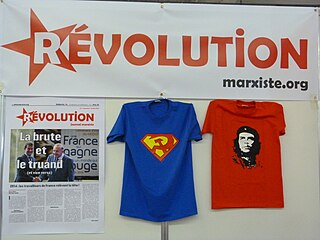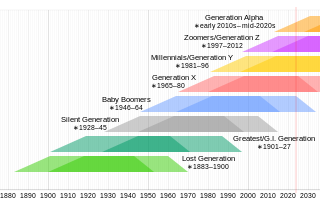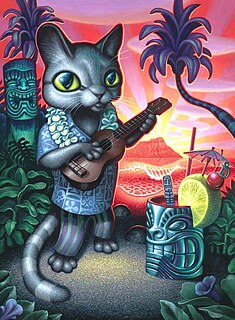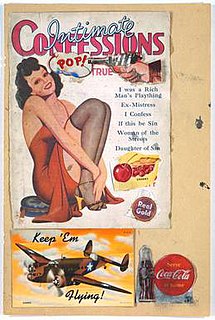 W
WFacebook is an American online social media and social networking service based in Menlo Park, California, and a flagship service of the namesake company Facebook, Inc. It was founded by Mark Zuckerberg, along with fellow Harvard College students and roommates Eduardo Saverin, Andrew McCollum, Dustin Moskovitz, and Chris Hughes.
 W
WAtomic Age in design refers to the period roughly corresponding to 1940–1963, when concerns about nuclear war dominated Western society during the Cold War. Architecture, industrial design, commercial design, interior design, and fine arts were all influenced by the themes of atomic science, as well as the Space Age, which coincided with that period. Atomic Age design became popular and instantly recognizable, with a use of atomic motifs and space age symbols.
 W
WThe Bubi people are a Bantu ethnic group of Central Africa who are indigenous to Bioko Island, Equatorial Guinea. Once the majority group in the region, the population experienced a sharp decline due to war and disease during Portuguese expeditions. By the end of Spanish colonial rule in the mid 20th century, and after substantial intermarriage with newly introduced populations, such as Afro-Cubans, Krio people, Portuguese people and Spaniards, the Bubi people, again, experienced a great decline in number. Seventy-five percent perished due to tribal/clan rooted political genocide during a civil war that led to Spanish Guinea's independence from Spain. This, too, sparked mass exodus from their homeland with most of the exiles and refugees immigrating into Spain. The indigenous Bubi of Bioko Island have since co-existed with non-indigenous Krio Fernandinos; and members of the Fang ethnic group, who have immigrated in large numbers from Río Muni. Once numbering approximately 3 million, the Bubi currently number around 100,000 worldwide.
 W
WCommunist chic are elements of popular culture such as fashion and commodities based on communist symbols and other things associated with Communism. A typical example is T-shirts and other memorabilia with Alberto Korda's iconic photo of Che Guevara.
 W
WCredibility comprises the objective and subjective components of the believability of a source or message. Credibility dates back to Aristotle theory of Rhetoric. Aristotle defines rhetoric as the ability to see what is possibly persuasive in every situation. He divided the means of persuasion into three categories, namely Ethos, Pathos, and Logos, which he believed have the capacity to influence the receiver of a message. According to Aristotle, the term “Ethos” deals with the character of the speaker. The intent of the speaker is to appear credible. In fact, the speaker's ethos is a rhetorical strategy employed by an orator whose purpose is to "inspire trust in his audience.” Credibility has two key components: trustworthiness and expertise, which both have objective and subjective components. Trustworthiness is based more on subjective factors, but can include objective measurements such as established reliability. Expertise can be similarly subjectively perceived, but also includes relatively objective characteristics of the source or message. Secondary components of credibility include source dynamism (charisma) and physical attractiveness.
 W
WDoujin soft , also called doujin games (同人ゲーム), are video games created by Japanese hobbyists or hobbyist groups, more for fun than for profit; essentially, the Japanese equivalent of independent video games or fangames. Most of them are based on pre-existing material ("modding"), but some are entirely original creations. They are almost always exclusive to Windows-based PCs, but a few notable exceptions also exist for the Dreamcast, a console on which homebrew development was popular.
 W
WEtiquette is the set of conventional rules of personal behaviour in polite society, usually in the form of an ethical code that delineates the expected and accepted social behaviours that accord with the conventions and norms observed by a society, a social class, or a social group. In modern English usage, the French word étiquette (ticket) dates from the year 1750.
 W
WA fad, trend, or craze is any form of collective behavior that develops within a culture, a generation or social group in which a group of people enthusiastically follow an impulse for a short period.
 W
WFugazza con queso, or simply Fugazza, is a common type of Argentinian pizza originating in Buenos Aires that consists of a thick pizza crust topped with onions, cheese, and sometimes olives. It is derived from a combination of Neapolitan pizza with Italian focaccia bread.
 W
WGeneration X is the demographic cohort following the baby boomers and preceding the millennials. Researchers and popular media use the early-to-mid-1960s as starting birth years and the late 1970s to early 1980s as ending birth years, with the generation being generally defined as people born from 1965 to 1980. By this definition and U.S. Census data, there are 65.2 million Gen Xers in the United States as of 2019. Most members of Generation X are the children of the Silent Generation and early boomers; Xers are also often the parents of millennials and Generation Z.
 W
WGikII is a series of European conferences on the intersections between law, technology and popular culture. It is hosted at a different institution every year. The first conference was in 2006 and was held in Edinburgh, and was organised by Lilian Edwards and Andres Guadamuz.
 W
WThe portmanteau coinages kidult, rejuvenile, adultescent refer to adults with interests traditionally seen as suitable for children. A kidult is also a person who claims to be a kid at heart, whilst endulging in forms of media meant for children, or a person who shows signs of Peter Pan Syndrome. It can also mean a parent who acts childish with their children, but does not take on their duties as a disciplinarian.
 W
W"Low culture" is a derogatory term for forms of popular culture that have mass appeal. Its contrast is "high culture", which can also be derogatory. It has been said by culture theorists that both high culture and low culture are subcultures. Popular culture is mass produced by the what has been called by culture analyst Theodor Adorno the "culture industry".
 W
WLowbrow, or lowbrow art, describes an underground visual art movement that arose in the Los Angeles, California area in the late 1960s. It is a populist art movement with its cultural roots in underground comix, punk music, tiki culture, graffiti, and hot-rod cultures of the street. It is also often known by the name pop surrealism. Lowbrow art often has a sense of humor – sometimes the humor is gleeful, sometimes impish, and sometimes it is a sarcastic comment.
 W
WPizza is a savory dish of Italian origin consisting of a usually round, flattened base of leavened wheat-based dough topped with tomatoes, cheese, and often various other ingredients, which is then baked at a high temperature, traditionally in a wood-fired oven. A small pizza is sometimes called a pizzetta. A person who makes pizza is known as a pizzaiolo.
 W
WPop art is an art movement that emerged in the United Kingdom and the United States during the mid- to late-1950s. The movement presented a challenge to traditions of fine art by including imagery from popular and mass culture, such as advertising, comic books and mundane mass-produced objects. One of its aims is to use images of popular culture in art, emphasizing the banal or kitschy elements of any culture, most often through the use of irony. It is also associated with the artists' use of mechanical means of reproduction or rendering techniques. In pop art, material is sometimes visually removed from its known context, isolated, or combined with unrelated material.
 W
WA pop icon is a celebrity, character or object whose exposure in popular culture is regarded as constituting a defining characteristic of a given society or era. The usage of the term is largely subjective since there are no definitively objective criteria. The categorization is usually associated with elements such as longevity, ubiquity and distinction. Moreover, "pop icon" status is distinguishable from other kinds of notoriety outside pop culture, such as with historic figures. Some historic figures are recognized as having reached "pop icon" status during their era, and such status may continue into the present. Pop icons of previous eras include Benjamin Franklin and Mozart.
 W
WPop-culture tourism is the act of traveling to locations featured in popular literature, film, music, or any other form of media. Also referred to as a "Location Vacation".
 W
WRemix culture, sometimes read-write culture, is a term describing a society that allows and encourages derivative works by combining or editing existing materials to produce a new creative work or product. A remix culture would be, by default, permissive of efforts to improve upon, change, integrate, or otherwise remix the work of copyright holders. While combining elements has always been a common practice of artists of all domains throughout human history, the growth of exclusive copyright restrictions in the last several decades limits this practice more and more by the legal chilling effect. In reaction, Harvard law professor Lawrence Lessig, who considers remixing a desirable concept for human creativity, has worked since the early 2000s on a transfer of the remixing concept into the digital age. Lessig founded the Creative Commons in 2001, which released Licenses as tools to enable remix culture again, as remixing is legally prevented by the default exclusive copyright regime applied currently on intellectual property. The remix culture for cultural works is related to and inspired by the earlier Free and open-source software for software movement, which encourages the reuse and remixing of software works.
 W
WThis is a list of fiction and media of all kinds of media featuring werewolves, lycanthropy and shape-shifting.